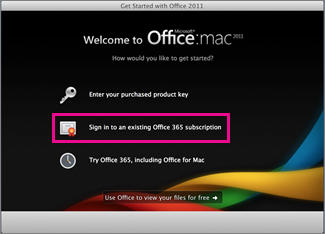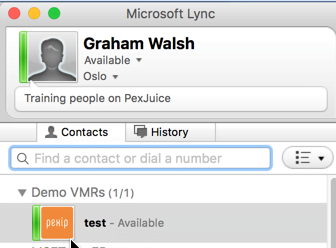
- #Lync for mac 2011 user guide how to
- #Lync for mac 2011 user guide code
- #Lync for mac 2011 user guide windows
But without doing so it is not possible to assign different types of traffic to different DSCP queues on the network as all traffic from the Lync desktop clients would be tagged, and thus prioritized the same. It should be understood that it is not required to define media port ranges in order to utilize DSCP traffic prioritization on the network. For the purposes of this article it is assumed that QoS is not yet defined on the network and the next section will outline the actual configuration on an example switch. The actual values which should be used must coincide with what the networking devices are configured to support, so it is critical to first understand how DSCP may already be defined on the network. This previous article explains the different levels of classifications and the supported marking values for each. By default this value is null and would be seen in a packet capture like this:ĭifferentiated Services Field: 0x00 (DSCP 0x00: Default) The ‘tagging’ or ‘marking’ mentioned earlier is in reference to the DSCP value set on the outgoing packets from a client. The articles linked to in the previous paragraph include those details and can be used to complete the configuration started in this article. A complete QoS plan should also take into account the media port ranges and DSCP values for client-to-server and server-to-server media for conferencing and media relay call flows.
#Lync for mac 2011 user guide how to
Keep in mind that although the official TechNet guidance covers how to configure some of the same settings as shown in this article their examples do not always represent the common practices used in the field.Īddressed here are only bi-directional peer-to-peer media sessions between any internal Lync endpoint including desktop clients and both types of Lync Optimized and Qualified phones. Various existing articles like the official TechNet guidance and this excellent article by Lync MVP Elan Shudnow are great resources to also read through.
#Lync for mac 2011 user guide windows
A proper QoS approach is to address both client-to-server and server-to-server topologies by configuring Windows operating system policy settings and Lync Server settings applicable to both Windows desktop clients and servers.

This article is not intended to serve as a complete guide to all aspects of enabling QoS for Lync Server. Providing end-to-end QoS in a Lync environment starts with defining port ranges for specific traffic to always be sent to and then includes the ability for the client sending that traffic to tag it with proper DSCP values so that the network devices place the traffic into the appropriate QoS queues. Or in some cases only the audio traffic is tagged while other times audio, video, desktop sharing, or other traffic types like peer-to-peer file sharing are all individually categorized with unique values to create a layered approach to handling critical and non-critical data streams.

Not all of the options shown here are necessarily critical for example some administrators prefer to only prioritize the media payloads of Lync while others will also include the signaling traffic. While there exists various modes of thought on these approaches the example guidance in this article will closely mimic real-world best practices which many production deployments of Lync share in common.

Using this combination of traffic classification, commonly referred to as DiffServ, and organization will provide network routers and switches the ability easily identify real-time communication traffic and then prioritize each category as desired.
#Lync for mac 2011 user guide code
For the purposes of Lync the applicable solutions covered in this article are (a) leveraging Differentiated Services Code Point (DSCP) identification of specific traffic types and (b) defining separate custom port ranges for the various media payloads in Lync. The term Quality of Service (QoS) can refer to a variety of technical approaches for prioritizing specific traffic over an IP network.

This article covers various aspects of configuring a complete Quality of Service (QoS) design in a Lync environment which utilizes various models of IP handsets for Lync.


 0 kommentar(er)
0 kommentar(er)
